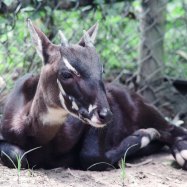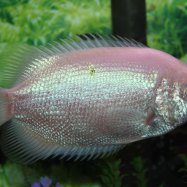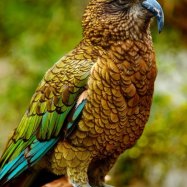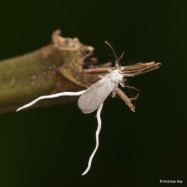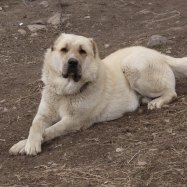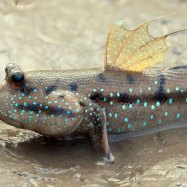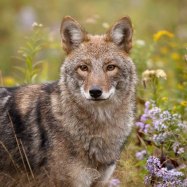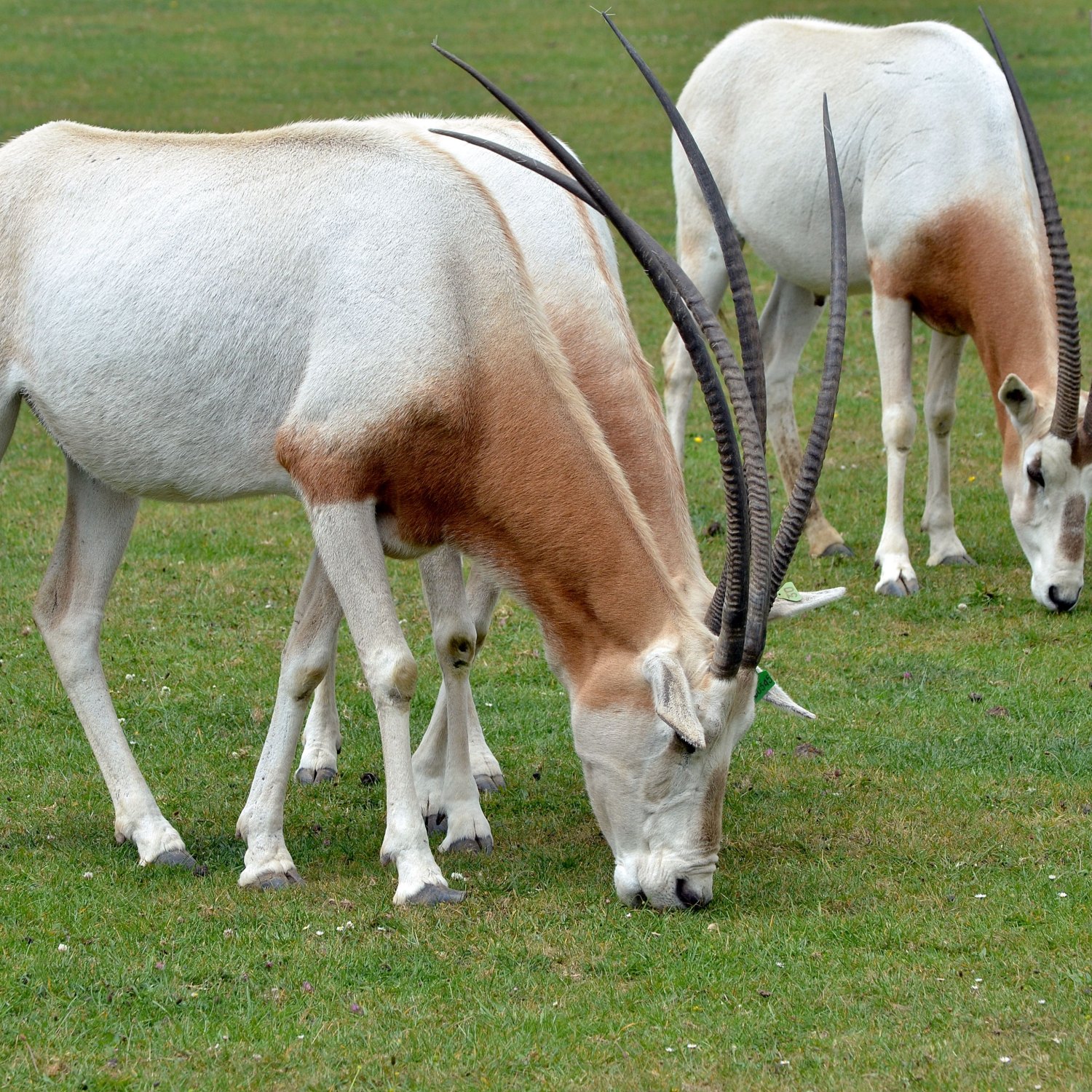
Scimitar Horned Oryx
1.8 to 2.3 meters (5.9 to 7.5 feet)
The scimitar-horned oryx, a member of the Bovidae family, can be found in North African countries such as Algeria, Chad, Niger, Sudan, and Tunisia. With a length of 1.8 to 2.3 meters and a large, robust body shape, these majestic animals are perfectly adapted to survive in their arid habitats. Sadly, they are listed as Extinct in the Wild, making conservation efforts crucial to their survival.
Animal Details Summary:
Common Name: Scimitar Horned Oryx
Kingdom: Animalia
Habitat: Savannahs, grasslands, and semi-deserts
The Magnificent Scimitar Horned Oryx: A True Symbol of Resilience and Adaptation
The African continent is known for its diverse and unique wildlife, filled with animals that have adapted to its varied habitats. One such animal is the Scimitar Horned Oryx, scientifically known as Oryx dammah, a majestic and resilient creature that calls the vast savannahs, grasslands, and semi-deserts of Africa its home.This elegant antelope, also commonly known as the Scimitar Horned Oryx, is a member of the Animalia kingdom, Chordata phylum, Mammalia class, and Artiodactyla order. It belongs to the Bovidae family, which includes other species such as antelopes, goats, sheep, and cattle, making it a close relative of these familiar animals Scimitar Horned Oryx.
Adaptations for Survival in Harsh Environments
The Scimitar Horned Oryx is a master of adaptation, with features that allow it to thrive in the extreme environments it calls home. Its large body, measuring between 1.8 to 2.3 meters (5.9 to 7.5 feet) in length, and weighing up to 600 pounds, is a testament to its resilience and strength.One of its most striking features is its horns, which give the species its name. Both male and female Scimitar Horned Oryx have horns, with the males' being longer and more curved than the females'. These sharp, curved horns, which can reach up to 115 centimeters (45 inches) in length, are used not only for protection but also as a means of defense against predators Sambar.
In addition to their horns, the Scimitar Horned Oryx also has other physical adaptations that help it thrive in its harsh habitat. Its white body coloration is perfect for the hot and dry environments of the African savannahs, as it reflects sunlight and helps to keep the animal cool. The reddish-brown neck and chest, along with black markings on the face and legs, serve as a form of camouflage, helping the animal blend into its surroundings and avoid detection.
A Herbivore with Specialized Feeding Methods
The Scimitar Horned Oryx is a herbivorous animal, meaning it only feeds on plant matter. This unique feeding method requires adaptations to its digestive system, which the species has evolved to maximize its ability to extract nutrients from plants efficiently.Being a specialized grazer, the Scimitar Horned Oryx has adapted to feed on grasses, leaves, and shoots, which are readily available in its habitat. Its sharp hooves provide it with the necessary traction to move quickly across the savannah, grazing on the abundant vegetation as it moves. It also has a four-chambered stomach, which helps in digestion, allowing it to extract as many nutrients as possible from its plant-based diet.
Habitat and Geographic Distribution
The Scimitar Horned Oryx is a native of Africa, with its country of origin being North Africa. It is primarily found in countries such as Algeria, Chad, Niger, Sudan, and Tunisia, although it used to have a much wider range, including countries such as Egypt, Libya, Mali, and Mauritania.The species is highly adaptable, with the ability to thrive in different types of habitats. It is commonly found in savannahs, grasslands, and semi-deserts, where it grazes on a wide variety of plants. Its strong sense of smell and excellent vision also help it navigate these environments, making it easier for the species to find food and avoid danger.
Threats to the Scimitar Horned Oryx
Like many other species in the African continent, the Scimitar Horned Oryx has not been spared from the threats of human activity. Habitat loss, hunting, and competition for resources have all contributed to the decline in population numbers of this magnificent animal.In the early 20th century, the species was declared extinct in the wild, primarily due to overhunting. However, through breeding programs in zoos and private collections, the Scimitar Horned Oryx has been successfully reintroduced into parts of its natural range, with small populations now found in some African countries.
Conservation Efforts and the Future of the Scimitar Horned Oryx
The Scimitar Horned Oryx is a true symbol of resilience, survival, and adaptation. Despite facing multiple threats, this species has managed to overcome the odds and make a comeback from the brink of extinction.To ensure the long-term survival of this animal, conservation efforts are focused on protecting its habitat, enforcing strict regulations on hunting and trading, and reintroducing captive-bred individuals into suitable areas of its natural range. These efforts have led to a slow but steady increase in population numbers, giving hope for the future of this remarkable animal.
In addition to the efforts to protect the species in the wild, the Scimitar Horned Oryx also plays a crucial role in conservation education and awareness. With its resilience and remarkable adaptations, this animal serves as an inspiration and a reminder of the importance of protecting and preserving our planet's biodiversity.
The Legacy of the Scimitar Horned Oryx
The Scimitar Horned Oryx is more than just an animal; it is a symbol of resilience, adaptability, and hope. Its story serves as a reminder of the impact of human activity on wildlife and the importance of preserving our natural heritage for future generations.As efforts continue to protect and conserve this magnificent species, we must also learn from its story and make conscious efforts to protect other vulnerable species and restore balance and harmony to our planet. The Scimitar Horned Oryx is a testament to what can be achieved through dedication, hard work, and a deep respect for nature. Let us continue to work towards a future where this and other amazing animals can thrive long into the future.

Scimitar Horned Oryx
Animal Details Scimitar Horned Oryx - Scientific Name: Oryx dammah
- Category: Animals S
- Scientific Name: Oryx dammah
- Common Name: Scimitar Horned Oryx
- Kingdom: Animalia
- Phylum: Chordata
- Class: Mammalia
- Order: Artiodactyla
- Family: Bovidae
- Habitat: Savannahs, grasslands, and semi-deserts
- Feeding Method: Herbivorous
- Geographical Distribution: Africa
- Country of Origin: North Africa
- Location: North African countries like Algeria, Chad, Niger, Sudan, and Tunisia
- Animal Coloration: White body color with a reddish-brown neck and chest, and black markings on the face and legs
- Body Shape: Large and robust
- Length: 1.8 to 2.3 meters (5.9 to 7.5 feet)
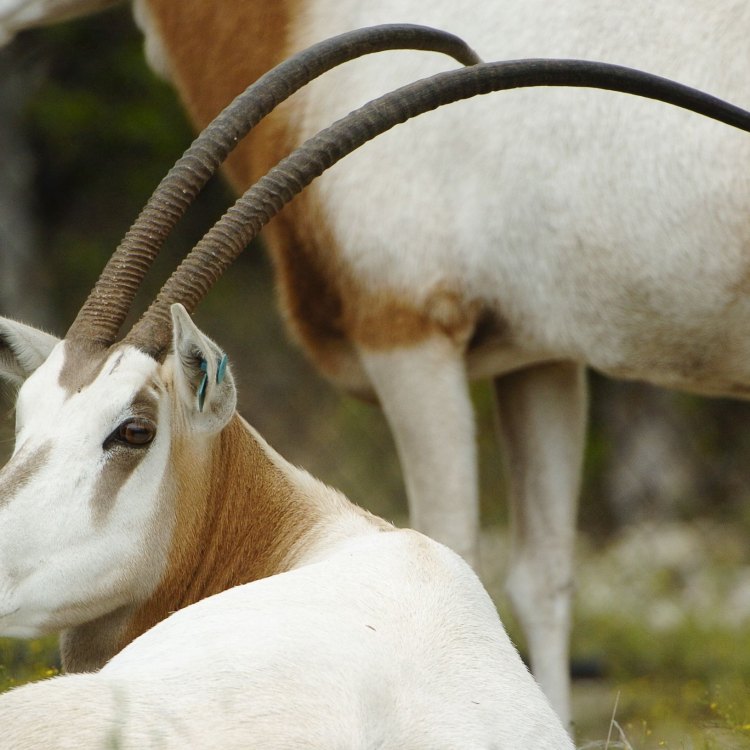
Scimitar Horned Oryx
- Adult Size: Male: 180 to 204 cm (71 to 80 in); Female: 162 to 177 cm (64 to 70 in)
- Average Lifespan: 10 to 20 years
- Reproduction: Sexual
- Reproductive Behavior: Polygynous
- Sound or Call: Low grunting or roaring sounds
- Migration Pattern: Sedentary
- Social Groups: Small herds
- Behavior: Nocturnal and primarily active during the early morning and late afternoon
- Threats: Hunting, habitat loss, and competition with domestic livestock
- Conservation Status: Extinct in the wild (EW)
- Impact on Ecosystem: Helps maintain the balance of vegetation and provides food for predators
- Human Use: Hunted for trophies and meat
- Distinctive Features: Long, thin, scimitar-shaped horns
- Interesting Facts: The Scimitar Horned Oryx has adapted to desert life by secreting a special oil in its hooves to prevent them from cracking in dry conditions
- Predator: Lions, leopards, and hyenas
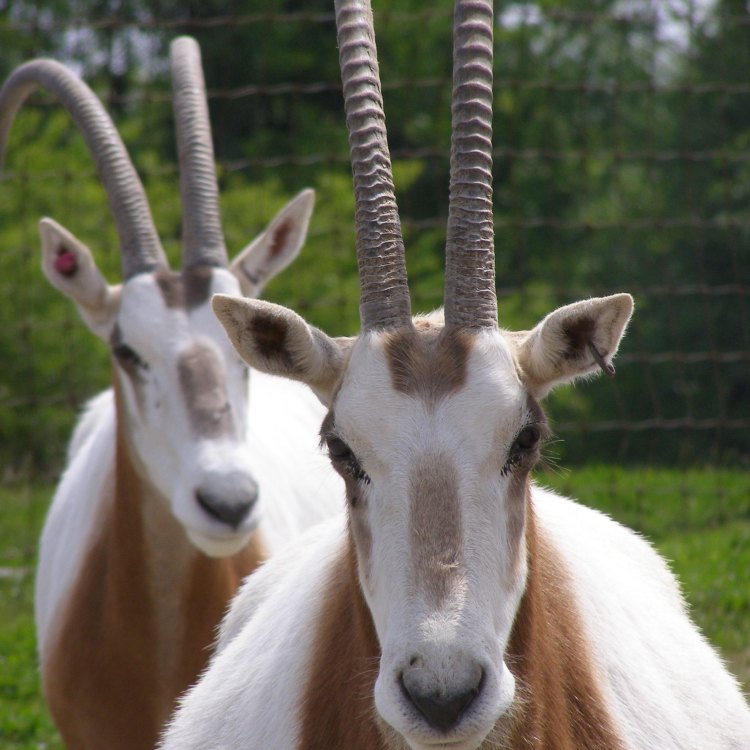
Oryx dammah
The Legendary Scimitar Horned Oryx: A Symbol of Adaptation and Survival
In the vast and often harsh landscapes of Africa, one animal stands out with its distinctive features and incredible adaptations. The Scimitar Horned Oryx, also known as the Sahara antelope, has long been a symbol of resilience and survival. With its impressive horns, unique behaviors, and crucial role in the ecosystem, this animal has captured the fascination of humans for centuries.Found primarily in the Sahara Desert and other arid regions of North Africa, the Scimitar Horned Oryx has evolved to thrive in some of the most challenging environments on Earth PeaceOfAnimals.Com. In this article, we will delve into the world of this magnificent creature, exploring its physical characteristics, behaviors, and the vital role it plays in its ecosystem. But first, let's start with its basic information.
Adult Size: Male: 180 to 204 cm (71 to 80 in); Female: 162 to 177 cm (64 to 70 in)
The Scimitar Horned Oryx is a large and majestic animal, with adult males reaching heights of up to 204 cm (80 inches) and females reaching up to 177 cm (70 inches). They have a lean and muscular body, allowing them to be swift and agile in their movements.
Average Lifespan: 10 to 20 years
In their natural habitats, the Scimitar Horned Oryx can live up to 10 to 20 years. However, in captivity, they have been known to live longer, with some individuals reaching up to 25 years of age.
Reproduction: Sexual
Like most of its antelope relatives, the Scimitar Horned Oryx has a sexual reproductive behavior. This means that they reproduce through mating, with females giving birth to a single calf after a gestation period of around 8 months. Mating occurs in the dry season when food and water are scarce, ensuring that the calves are born during the rainy season when resources are more abundant Song Thrush.
Reproductive Behavior: Polygynous
Male Scimitar Horned Oryx, also known as bulls, exhibit a polygynous mating strategy, meaning they mate with multiple females during the breeding season. This behavior is common in many species of antelopes and allows for the strongest genes to be passed on to the next generation.
Sound or Call: Low grunting or roaring sounds
The Scimitar Horned Oryx are generally quiet animals, but during breeding season, the males will produce low grunting or roaring sounds to attract potential mates and to establish dominance over other males.
Migration Pattern: Sedentary
Unlike many other antelope species, the Scimitar Horned Oryx is primarily sedentary, meaning they do not migrate long distances. They have adapted to survive in their arid habitat and are able to find food and water without needing to travel long distances.
Social Groups: Small herds
Scimitar Horned Oryx are social animals, living in small herds that typically consist of one bull, several females, and their young calves. These herds allow for protection against predators and provide social interactions crucial for the well-being of the animals.
Behavior: Nocturnal and primarily active during the early morning and late afternoon
In order to cope with the extreme heat of their desert habitat, Scimitar Horned Oryx have adapted to be primarily nocturnal. They are most active during the early morning and late afternoon when the temperatures are cooler, and food and water are more accessible.
Threats: Hunting, habitat loss, and competition with domestic livestock
Despite their resilience, the Scimitar Horned Oryx population has suffered a sharp decline due to various threats. Uncontrolled hunting, both for trophies and meat, has been a significant factor in their decline. Habitat loss, mainly caused by human activities such as agriculture and urbanization, has also greatly affected their population. Additionally, the introduction of domestic livestock into their habitat has resulted in competition for resources and the transmission of diseases.
Conservation Status: Extinct in the wild (EW)
The Scimitar Horned Oryx was once widespread in North African countries, but due to the threats mentioned above, they are now extinct in the wild. In fact, they are listed as "extinct in the wild" (EW) on the International Union for Conservation of Nature (IUCN) Red List.
Impact on Ecosystem: Helps maintain the balance of vegetation and provides food for predators
The extinction of this antelope species has had a significant impact on the ecosystem they once inhabited. With their large size, Scimitar Horned Oryx played a crucial role in regulating the vegetation in their habitat. They fed on shrubs, grasses, and other plants, preventing overgrowth and maintaining a balanced ecosystem. They were also a source of food for predators like lions, leopards, and hyenas, helping to maintain the population of these animals as well.
Human Use: Hunted for trophies and meat
For centuries, the Scimitar Horned Oryx has been hunted for its unique features and prized as a trophy animal. Its long, thin, scimitar-shaped horns have been sought after by hunters and collectors from around the world, contributing to their decline. Furthermore, their meat, which is said to be lean and flavorful, has also been a target for hunters.
Distinctive Features: Long, thin, scimitar-shaped horns
One cannot talk about the Scimitar Horned Oryx without mentioning its most distinctive feature - its impressive horns. These long, thin, scimitar-shaped horns can reach lengths of up to 1 meter (3 feet) in males and 65 cm (2 feet) in females. These horns are used for both defense and mate attraction, and their unique shape makes them highly desired by hunters and collectors.
Interesting Facts: The Scimitar Horned Oryx has adapted to desert life by secreting a special oil in its hooves to prevent them from cracking in dry conditions
Apart from their impressive horns, the Scimitar Horned Oryx has other fascinating adaptations that have allowed them to thrive in their harsh desert environment. One notable adaptation is the secretion of a special oil in their hooves, which helps prevent them from cracking in dry conditions. This adaptation is crucial for their survival in the unforgiving desert climate.
Predator: Lions, leopards, and hyenas
Despite their impressive horns and adaptations, the Scimitar Horned Oryx is still vulnerable to predators. Their main predators include lions, leopards, and hyenas, which prey on them for their meat and also for their young calves.
In conclusion, the Scimitar Horned Oryx is a remarkable animal that has adapted and survived in some of the harshest environments on Earth. Sadly, they are now extinct in the wild, but efforts are being made to reintroduce them into their native habitat. By understanding and appreciating the unique features of this animal, we can work towards its conservation and ensure that future generations can witness this legendary creature in all its glory.
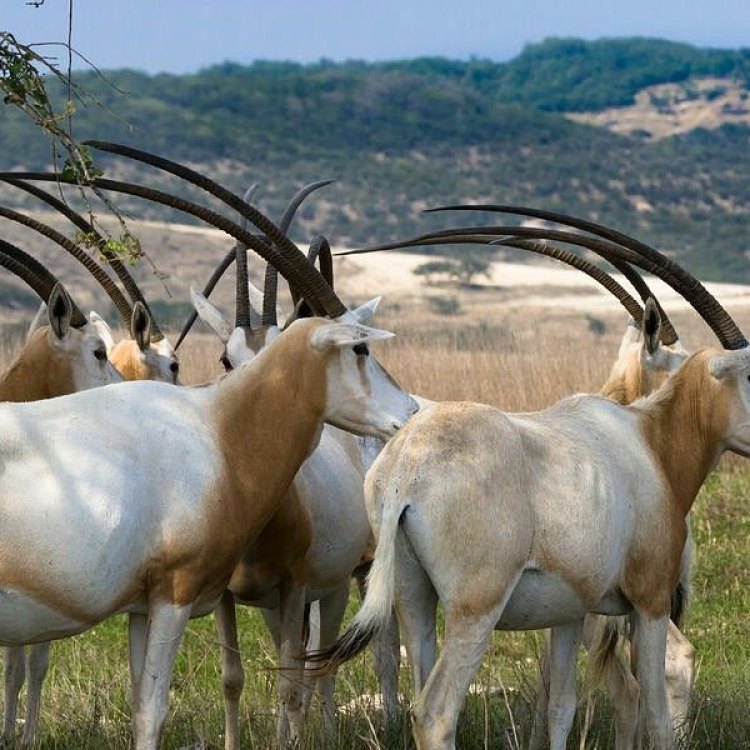
The Magnificent Scimitar Horned Oryx: A True Symbol of Resilience and Adaptation
Disclaimer: The content provided is for informational purposes only. We cannot guarantee the accuracy of the information on this page 100%. All information provided here may change without prior notice.


